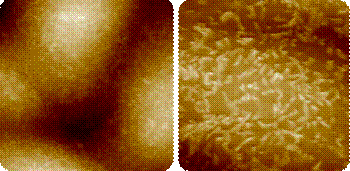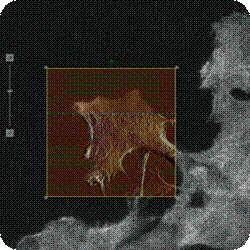Bruker unveiled the BioScope Resolve™, a biological atomic force microscope (bioAFM), at the sixth AFM BioMed Conference. The BioScope Resolve™ features excellent resolution imaging and comprehensive cell mechanics capabilities, and can be used with an inverted optical microscope (IOM).
The system includes the proprietary PeakForce Tapping technology of Bruker. Researchers can obtain imaging at excellent resolution and pico-newton level force measurements on biological samples.
Unrivalled AFM and Optical Syncronization Capabilities
The BioScope Resolve seamlessly combines light and atomic force microscopy and offers in-depth analysis of biological samples along with mechanical properties.
The system features a unique design, making research with integrated AFM and optical research convenient, with its open access to single instrument setup, the sample and correlated analysis and data collection. It is now possible for researchers to accurately link AFM images and real-time optical images.
Irrespective of the AFM experience level of the user, the novel ScanAsyst-Cell mode and the MIROView graphical interface ensure excellent data generation, regardless of the user’s AFM experience level.
Other key features of the BioScope Resolve™ include:
- Compatibility with all major microscope models and optical techniques
- Single, integrated view and operation controls for optical or AFM microscope
- Video creation of experiments showing optical and AFM results
- BioAFM accessories and PeakForce Tapping probes to meet every application
- Syncronized AFM images, force maps and single force curves with optical images and data
- Point-and-click setup for automated force and imaging measurements
Resolving Nanoscale Structures on Living Cells
AFM imaging of microvilli structures was done on fixed cells before now to use the higher imaging forces of traditional AFM tapping modes. Even though it was possible to see the underlying cytoskeleton of a living cell, attaining the resolution needed for accurately viewing the microvilli on the unfixed, softer living cells was not possible. With the BioScope Resolve, the user can obtain high-resolution images of microvilli on delicate, living cell surface with the help of the low imaging forces of PeakForce Tapping®.

Figure 1. Bioscope Resolve with PeakForce Tapping now enables high-resolution imaging of microvilli on living cells. (25 µm and 10 µm images of MDCK cells captured at 1 kHz PeakForce QNM. Images obtained by Dr. Hermann Schillers, University of Munster.)
Real-Time Cell Topography, Modulus, and Fluorescence Observation
PeakForce QNM is used by the BioScope Resolve for collecting modulus and topography data simultaneously for certain studies like imaging of living cells with actin filaments with fluorescent labels. It is possible to observe changes in modulus, cell topography and fluorescence in real time by using synchronization for obtaining correlated fluorescence and AFM images.
For instance, exposure of cells to the actin-disrupting drug Cytochalasin, a user can observe that the fluorescence signal disappears and the modulus decreases simultaneously. Disappearing of fluorescence is correlated to the breakdown of the cytoskeleton of the cell. Furthermore, a time lapse movie of fluorescence and AFM images can be created to plot the modulus and fluorescence images over time.

Figure 2. Line-by-line synchronization of atomic force microscopy and confocal microscopy for true correlation of AFM and optical data.
Molecular High-Resolution Imaging
The superior features of this sophisticated bioAFM including highest resolution topography mapping, nanomechanical characterization and optical microscopy abilities can help resolve the individual subunits of bacteriorhodopsin (bR) trimers.

Figure 3. PeakForce Tapping image of the bacteriorhodopsin (bR) membrane protein lattice structure taken on an inverted optical microscope. The inset shows a single particle averaging of the bR trimer. The green circle shows a single lattice defect. The blue circle shows the lattice substructures (Z scale = 0.6 nm).
Quantitative Cell Mechanics and Molecular Force Spectroscopy Data
The special technologies of Bruker including PeakForce QNM and FASTForce Volume can be combined to offer an excellent range of ramp frequencies and a highly quantitative property mapping for biological samples.
Furthermore, automated measurement features and increased imaging speeds offer more information in less time.
The novel FASTForce Volume mode of Bruker compliments PeakForce QNM in order to offer an extensive range of ramp frequencies.
- FASTForce volume data acquisition, from 0.1Hz to 1 kHz in liquid or 2kHz in air
- Widest ramp frequency range, when integrated with PeakForce QNM, from 0.1Hz to 1 kHz in liquid or 2kHz in air
- pN level trigger forces for a highly sensitive, high-resolution force distance curves for force spectroscopy

Figure 4. Widest range of ramp frequencies for more data in less time.